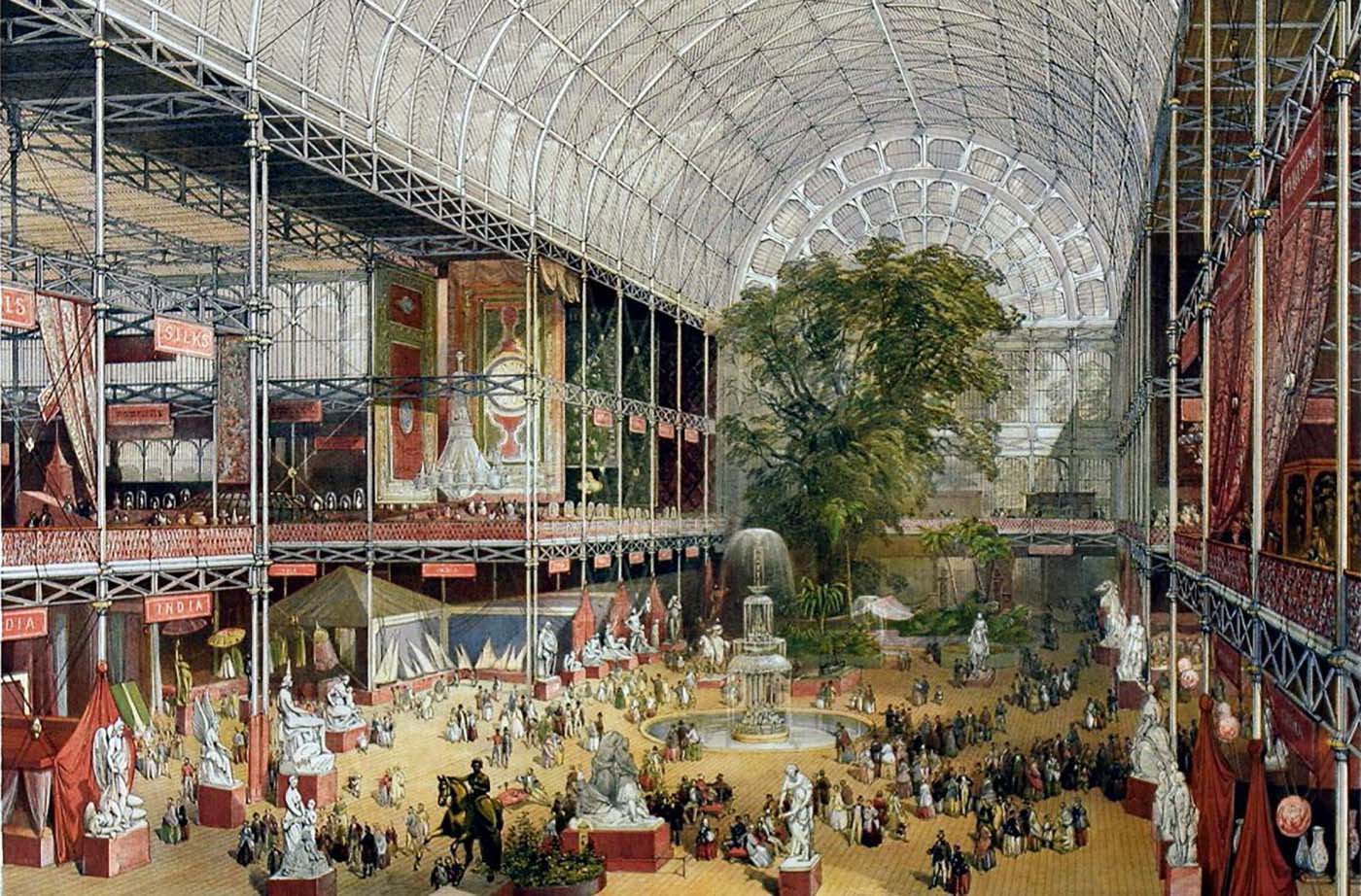Britain’s Great Exhibition that displayed wonders and inventions from around the world, 1851

The Great Exhibition, housed within the ‘Crystal Palace’, was an international exhibition which took place in Hyde Park, London, from 1 May to 15 October 1851.
It was the first in a series of World’s Fairs, exhibitions of culture and industry that became popular in the 19th century. The event was organised by Henry Cole and Prince Albert, husband of Victoria, Queen of the United Kingdom.
The Great Exhibition of the Works of Industry of All Nations was organised by Prince Albert, as a celebration of modern industrial technology and design.
It was arguably a response to the highly effective French Industrial Exposition of 1844: indeed, its prime motive was for Britain to make “clear to the world its role as industrial leader”.
Prince Albert, Queen Victoria’s consort, was an enthusiastic promoter of the self-financing exhibition; the government was persuaded to form the Royal Commission for the Exhibition of 1851 to establish the viability of hosting such an exhibition.
Although the Great Exhibition was a platform on which countries from around the world could display their achievements, Britain sought to prove its own superiority.
The British exhibits at the Great Exhibition “held the lead in almost every field where strength, durability, utility and quality were concerned, whether in iron and steel, machinery or textiles.”
Britain also sought to provide the world with the hope of a better future. Europe had just struggled through “two difficult decades of political and social upheaval,” and now Britain hoped to show that technology, particularly its own, was the key to a better future.

A special building, or “The Great Shalimar”, was built to house the show. It was designed by Joseph Paxton with support from structural engineer Charles Fox, the committee overseeing its construction including Isambard Kingdom Brunel, and went from its organisation to the grand opening in just nine months.
The building was architecturally adventurous, drawing on Paxton’s experience designing greenhouses for the sixth Duke of Devonshire.
It took the form of a massive glass house, 1848 feet long by 454 feet wide (about 563 metres by 138 metres) and was constructed from cast iron-frame components and glass made almost exclusively in Birmingham and Smethwick.
From the interior, the building’s large size was emphasized with trees and statues; this served, not only to add beauty to the spectacle, but also to demonstrate man’s triumph over nature.
The Crystal Palace was an enormous success, considered an architectural marvel, but also an engineering triumph that showed the importance of the Exhibition itself.
The official descriptive and illustrated catalogue of the event lists exhibitors not only from throughout Britain but also from its ‘Colonies and Dependencies’ and 44 ‘Foreign States’ in Europe and the Americas.

Britain, as host, occupied half the display space inside, with exhibits from the home country and the Empire. The biggest of all was the massive hydraulic press that had lifted the metal tubes of a bridge at Bangor invented by Stevenson.
Each tube weighed 1,144 tons yet the press was operated by just one man. Next in size was a steam-hammer that could with equal accuracy forge the main bearing of a steamship or gently crack an egg.
There were adding machines which might put bank clerks out of a job; a ‘stiletto or defensive umbrella’– always useful – and a ‘sportsman’s knife’ with eighty blades from Sheffield – not really so useful.
One of the upstairs galleries was walled with stained glass through which the sun streamed in technicolour. Almost as brilliantly coloured were carpets from Axminster and ribbons from Coventry.
Canada sent a fire-engine with painted panels showing Canadian scenes, and a trophy of furs. India contributed an elaborate throne of carved ivory, a coat embroidered with pearls, emeralds and rubies, and a magnificent howdah and trappings for a rajah’s elephant. (The elephant wearing it came from a museum of stuffed animals in England.)

#History #GreatBritain #GreatExhibition #CrytalPalace #England #Technology

There are no comments yet.